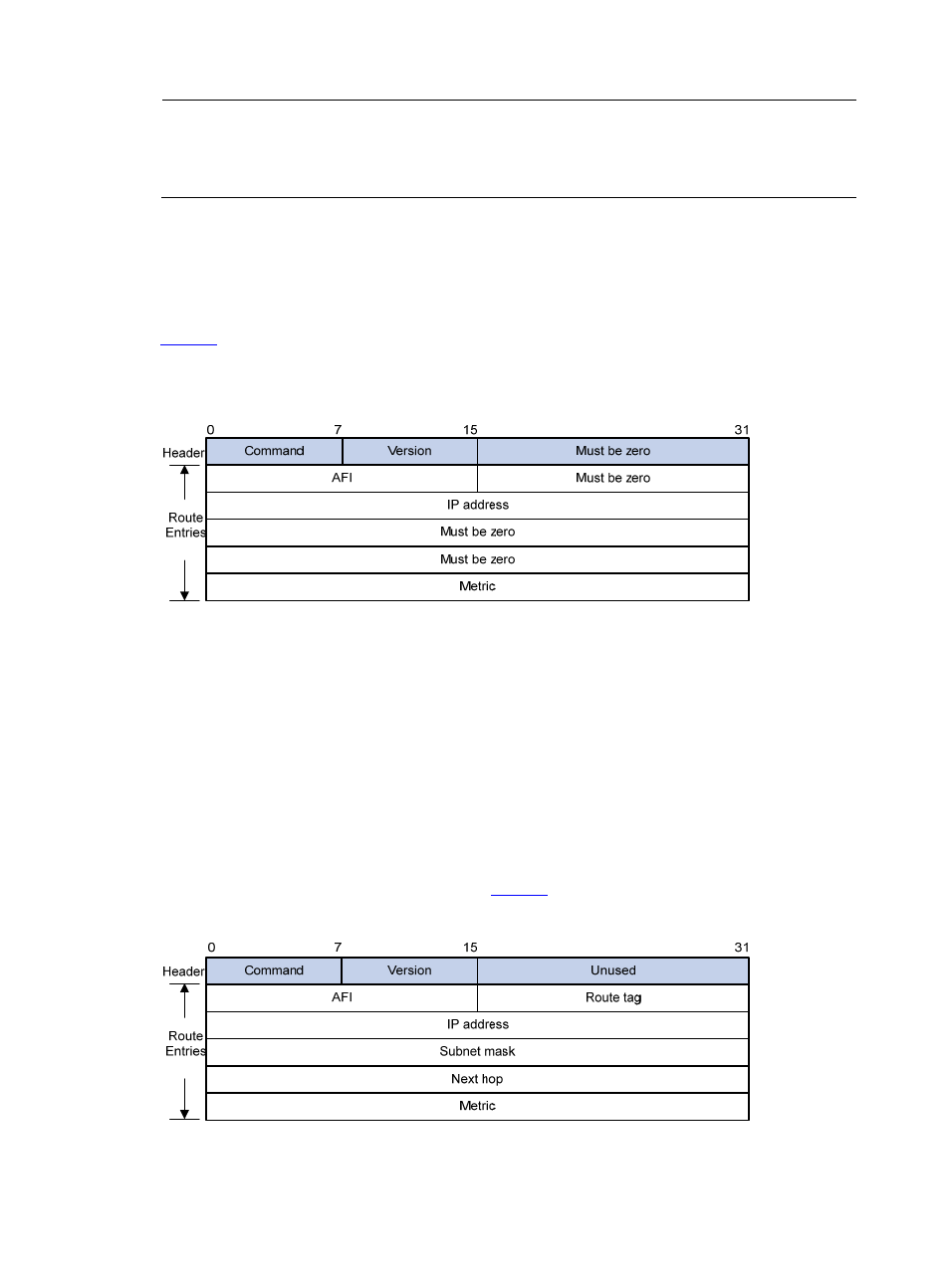Rip message format, Ripv1 message format, Ripv2 message format – H3C Technologies H3C SecPath F1000-E User Manual
Page 288

3
NOTE:
RIPv2 has two types of message transmission: broadcast and multicast. Multicast is the default type using
224.0.0.9 as the multicast address. The interface working in the RIPv2 broadcast mode can also receive
RIPv1 messages.
RIP Message Format
A RIP message consists of a header and up to 25 route entries. (A RIPv2 authentication message uses the
first route entry as the authentication entry, so it has up to 24 route entries.)
shows the format of RIPv1 message.
RIPv1 message format
Figure 1 RIPv1 Message Format
•
Command: Type of message. 1 indicates a request, which is used to request all or part of the
routing information from the neighbor, and 2 indicates a response, which contains all or part of the
routing information. A response message consists of up to 25 route entries.
•
Version: Version of RIP, 0x01 for RIPv1.
•
AFI: Address Family Identifier, 2 for IP, and 0 for request messages.
•
IP Address: Destination IP address of the route. It can be a natural network, subnet or a host
address.
•
Metric: Cost of the route, 16 for request messages.
RIPv2 message format
The format of RIPv2 message is similar to RIPv1.
shows it.
Figure 2 RIPv2 Message Format
The differences from RIPv1 are stated as following.
